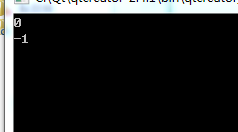malloc,free和new delete的區別
阿新 • • 發佈:2018-12-20
1.malloc和free是庫函式,以位元組為單位申請記憶體
2.new和delete是關鍵字,以型別為單位申請記憶體
3.malloc和free單純的對記憶體進行申請與釋放
4.對於基本型別new關鍵字會對記憶體進行初始化
5.對於類型別new和delete還負責建構函式和解構函式的呼叫
class Test
{
private:
int i;
public:
Test()
{
cout << "Test()" << endl;
i=0;
}
Test(int i)
{
cout << "Test(int i)" << endl;
this->i=i;
}
~Test()
{
cout << "~Test()" << endl;
}
int getI()
{
return i;
}
};void func()
{
int *p = reinterpret_cast<int*>(malloc(sizeof(int))); //malloc不能直接初始化
int *q = new int(10); //(new可以申請記憶體的時候初始化)
*p = 5;
cout << *p << " " << *q << endl;
free(p);
delete q;
Test* tp = reinterpret_cast<Test*>(malloc(sizeof(int)));
Test* tq = new Test;
cout << tp->getI() << " " << tq->getI() << endl;
free(tp);
delete tq;
}
example: 請問count是多少?
class A
{
private:
static int c_count;
public:
A()
{
c_count++;
}
~A()
{
c_count--;
}
static void Count()
{
cout <<c_count<<endl;
}
};
int A::c_count = 0;
int main()
{
A* a = static_cast<A*>(malloc(sizeof(A))); //由於只是申請一段記憶體,物件沒有生成,
a->Count(); //所以沒有呼叫建構函式,c_count保持為0
delete a; //呼叫delete函式後,解構函式會被呼叫,c_count--,
a->Count(); c_count會變為-1
return 0;
}
